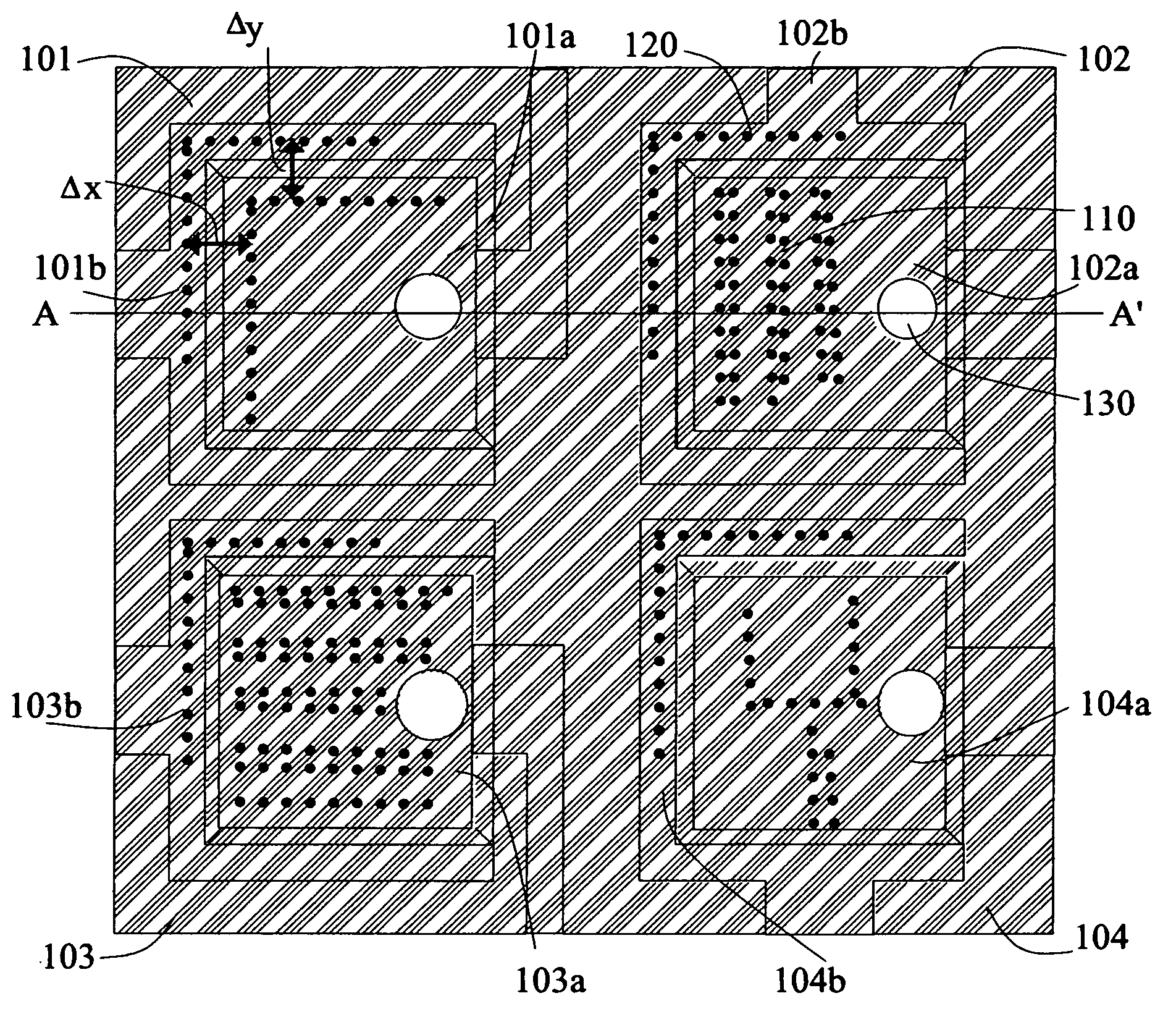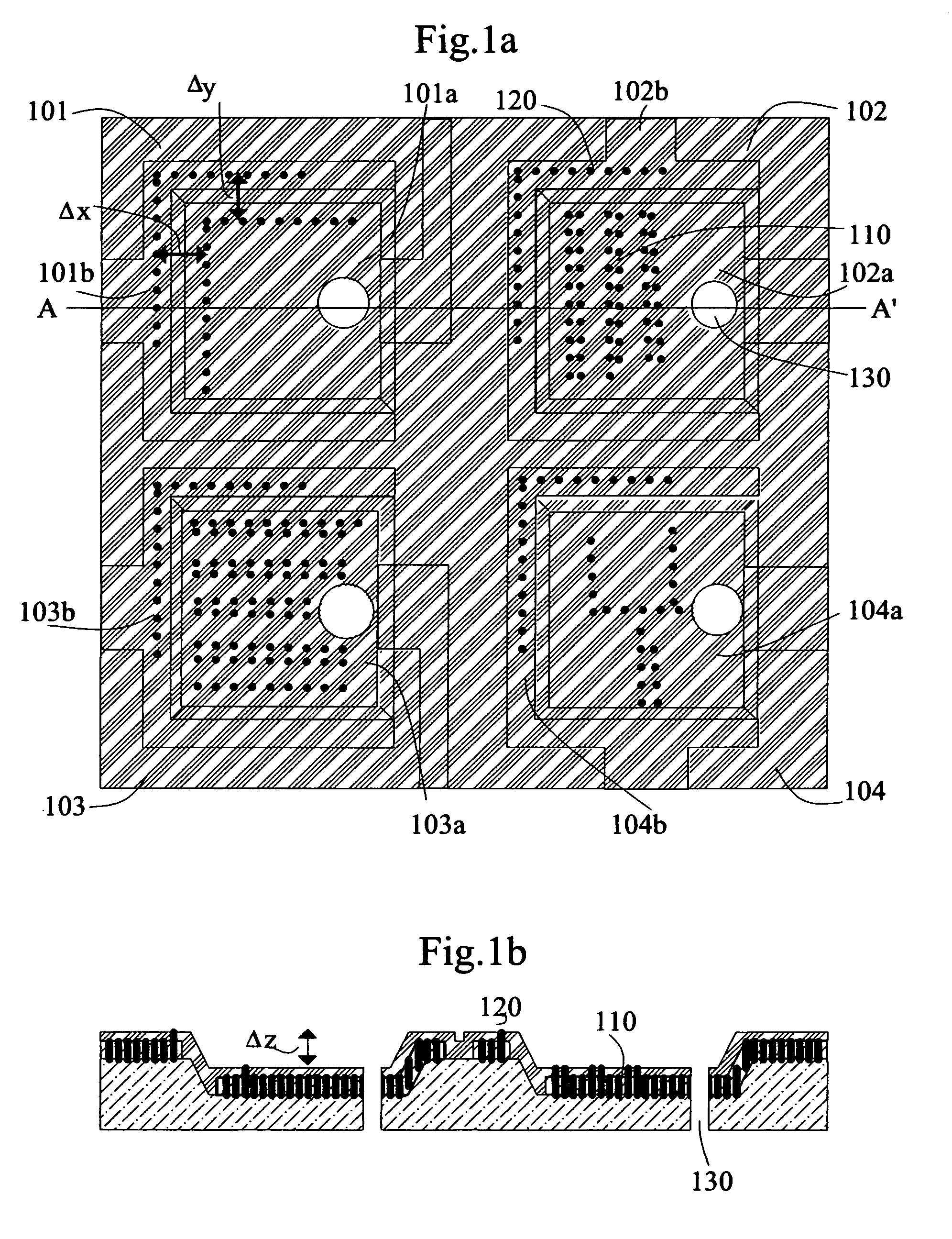Parallel electron beam lithography stamp (PEBLS)
a lithography stamp and electron beam technology, applied in the field of parallel electron beam lithography stamps, can solve the problems of limiting the speed of production, affecting the accuracy of lithography,
- Summary
- Abstract
- Description
- Claims
- Application Information
AI Technical Summary
Benefits of technology
Problems solved by technology
Method used
Image
Examples
Embodiment Construction
I. Outline of Parallel Electron Beam Lithography Stamp (PEBLS)
[0024]FIGS. 1a and 1b show the top and side view of one embodiment of the Parallel Electron Beam Lithography Stamp (PEBLS) system.
[0025]FIG. 1a illustrates four cells 101, 102, 103, 104, each of which include actuation electrodes 101a, 102a, 103a, 104a, with associated nanotip array patterns, and sensing electrodes 101b, 102b, 103b, 104b, with sensing nanotip patterns. Each cell size corresponds to the size of the area desired to be processed. For example, if the PEBLS is designed to pattern an area corresponding to microprocessor chip, cell sizes of 1 cm×1 cm may be appropriate. However, if the target of manufacture is a single circuit component such as an individual transistor, cell sizes in the micron range would be more appropriate. Multiple cells are provided each with an integrated alignment system 120 to achieve multiple process steps. However, if used for a single process step the alignment sensors 120 may be excl...
PUM
 Login to View More
Login to View More Abstract
Description
Claims
Application Information
 Login to View More
Login to View More - R&D
- Intellectual Property
- Life Sciences
- Materials
- Tech Scout
- Unparalleled Data Quality
- Higher Quality Content
- 60% Fewer Hallucinations
Browse by: Latest US Patents, China's latest patents, Technical Efficacy Thesaurus, Application Domain, Technology Topic, Popular Technical Reports.
© 2025 PatSnap. All rights reserved.Legal|Privacy policy|Modern Slavery Act Transparency Statement|Sitemap|About US| Contact US: help@patsnap.com



